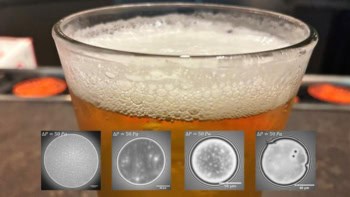
It’s out there
By Michael Banks in Miami, Florida
We need to better understand how other stars behave before we start looking for planets orbiting around them. That was the message from astronomers speaking in a session on searching for exoplanets at the 216th American Astronomical Society meeting in Miami, Florida.
Annie Baglin from the Observatoire de Paris, France, spoke about the $160m Convection Rotation and Planetary Transits (CoRoT) mission, built by the French Space Agency, which launched in 2006.
CoRoT has two objectives: to study the solar variation in other stars as well as searching for exoplanets via a technique known as “transiting”, where a planet passing in front of the star causes its solar output as seen by the satellite to dim slightly.
Indeed, CoRoT has already had breakthroughs in studying solar variations in other stars including hot stars and red giants. Yet the science that gets the most attention is CoRoT’s search for exoplanets.
Although CoRoT lost the use of two of its detectors last year, the craft is still going strong and has managed to detect a range of exoplanets.
Most of the exoplanets spotted by CoRoT are big, hot planets such as CoRoT-3b, which has a mass 21 times that of Jupiter.
On 17 March CoRoT discovered CoRoT-9b, which has a radius similar to Jupiter and a temperature of 350 K. “If it has moons, then they would be habitable,” says Baglin. But getting to the planet is another matter as it is lies 1500 light-years away.
The biggest find to date is possibly CoRoT-7b, discovered in February 2009, which has a similar diameter and mass to Earth.
Baglin outlined in her talk how difficult it is to spot such small planets saying that constant changes in the star’s activity makes it very difficult to detect planets orbiting them. “Once we have a better understanding of a star’s cycle then we will be better placed to start to look for exoplanets,” says Baglin.
CoRoT still has another three years to run, but it has already been superseded somewhat by NASA’s Kepler mission, which launched in March 2009 to look for Earth-like planets. “Kepler will do more than what we have,” says Baglin.



